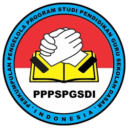Computational Thinking (CT) Unplugged dalam Pembelajaran Seni Tari di Sekolah Dasar
DOI:
https://doi.org/10.35568/naturalistic.v7i2.3096Keywords:
computational thinking (ct) unplugged, Learning, Dance, Elementary School, CreativityAbstract
This research is based on empirical facts, that until now dance arts learning in elementary schools (SD) still uses educational patterns in dance workshops. The orientation is that the student memorizes a certain dance so that the learning method of the student imitates the movement exemplified by the teacher without being given space to creatively process the body based on imagination and all its creative potential. This has an impact on the cover of various intelligences possessed by students. To hack this research seeks to give birth to the concept of dance art learning in elementary school by applying unplugged computational thinking (ct). The goal is that the learning of dance in elementary school is not just to pursue the memorization of motion, but students can creatively realize their creative ideas in the form of dance in accordance with the level of development. To achieve this, the research method used is descriptive analysis. The results of this research in the form of dance learning concepts in elementary schools that apply computational thinking unplugged and ready to be applied
Downloads
References
Bell, T., Witten, I. H., Fellows, M. (2015). CS
Unplugged an Enrichment and
Extension Programme for PrimaryAged Students. New York: Sam
Jarman.
Bers, M. U., Flannery, L., Kazakoff, E. R., &
Sullivan, A. (2014). Computational
thinking and tinkering: Exploration
of an early childhood robotics
curriculum. Computers and
Education, 72, 145–157.
https://doi.org/10.1016/j.compedu.
10.020
Cuny, Snyder, Wing. (2010). What is CS
Unplugged?
Gollberg, Merryl. (1997). Arts and Learning
an Integrated Approach to
Teaching and Learning in
Multicultural and Multilangual
Settings. New York: Longman.
Guilford, J. P. 1967. The Nature of human
Intelligence. New York: Mc GrawHill.
Kamaril, Cut. (2001). Konsep Pendidikan
Seni Tingkat SD-SLTP-SMU.
Makalah. Seminar dan Lokakarya
Nasional Pendidikan Senin. 18-20
April 2001. Jakarta: Hotel
Indonesia.
Kaufman C. J. & Sternberg. J. R. 2006. The
International Handbook of
Creativity. New York: Cambridge
University Press.
Kemendikbud. (2019). Pedoman
Implementasi Muatan/Mata
Pelajaran Informatika Kutikulum
Jenjang Pendidikan Dasar dan
Menengah. Jakarta: Kemdikbud.
Maharani, S., dkk. (2021). Computational
Thinking: Media Pembelajaran CSK (CT-Sheet for Kids) dalam
Matematika PAUD. Junal Obsesi:
Pendidikan Anaka Usia Dini. 5 (1),
hlm. 975-984.
Magisrahayu. (2019). Berpikir
Komputasional. Jakarta: Dirjen
GTK Kemdikbud.
Munandar, U. 2009. Pengembangan
Kreativitas Anak Berbakat. (3th.
ed) Jakarta: Rineka Cipta.
Sukmadinata, N. S. (2012). Metode
Penelitian Pendidikan. Bandung:
PT Remaja Rosdakarya.
Supriadi, D. 2001. Kreativitas, Kebudayaan
& Perkembangan Iptek. Bandung:
Alfabeta
Downloads
Published
How to Cite
Issue
Section
License
Copyright (c) 2023 Naturalistic: Jurnal Kajian dan Penelitian Pendidikan dan Pembelajaran

This work is licensed under a Creative Commons Attribution-NonCommercial-NoDerivatives 4.0 International License.
Copyright of Journal Naturalistic : Jurnal Kajian Penelitian Pendidikan dan Pembelajaran (e-ISSN:2548-8589, p-ISSN:2528-2921).
Open Access Policy
This journal provides immediate open access to its content on the principle that making research freely available to the public supports a greater global exchange of knowledge.
This journal is open access journal which means that all content is freely available without charge to users or / institution. Users are allowed to read, download, copy, distribute, print, search, or link to full text articles in this journal without asking prior permission from the publisher or author. This is in accordance with Budapest Open Access Initiative.










